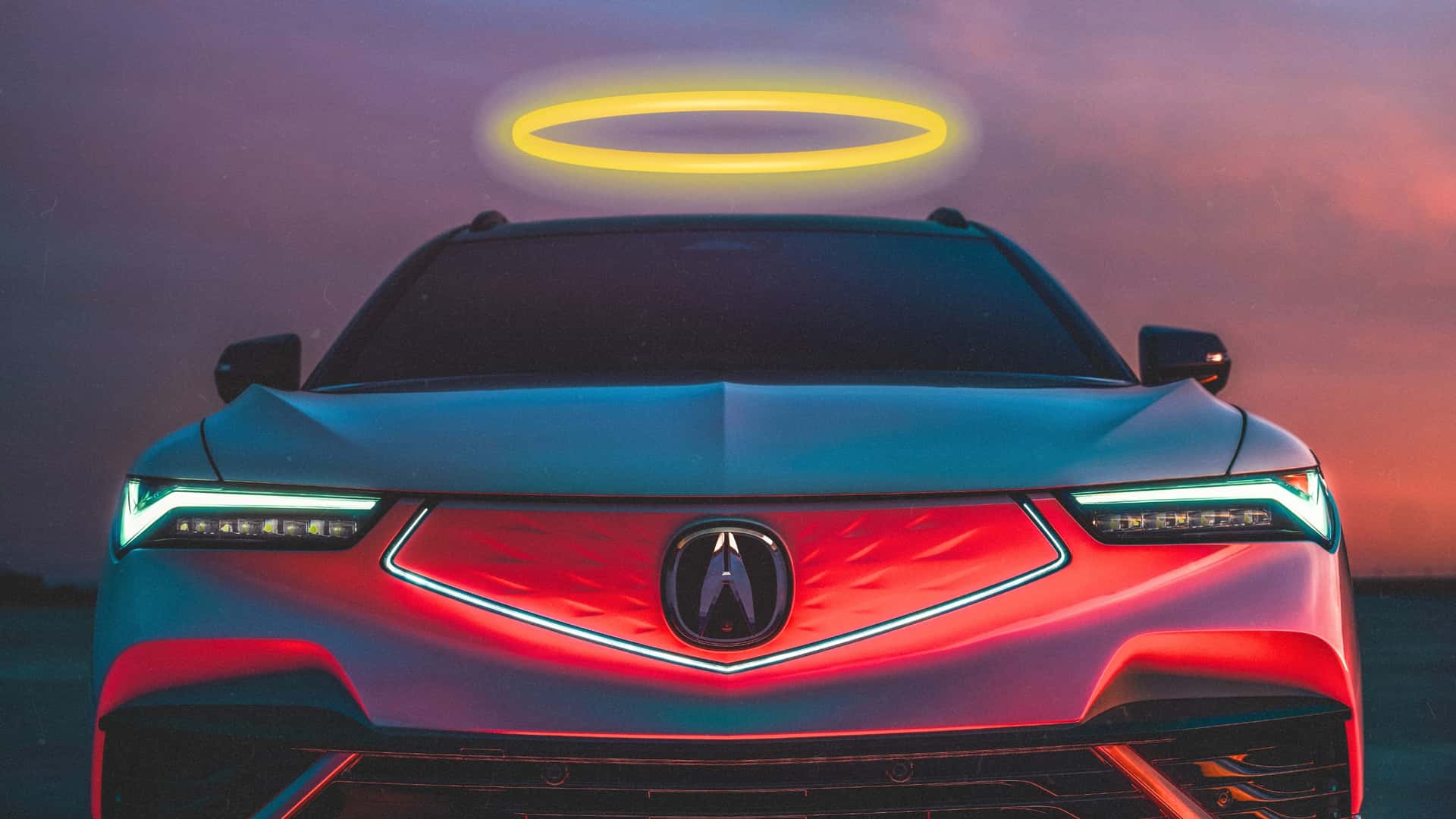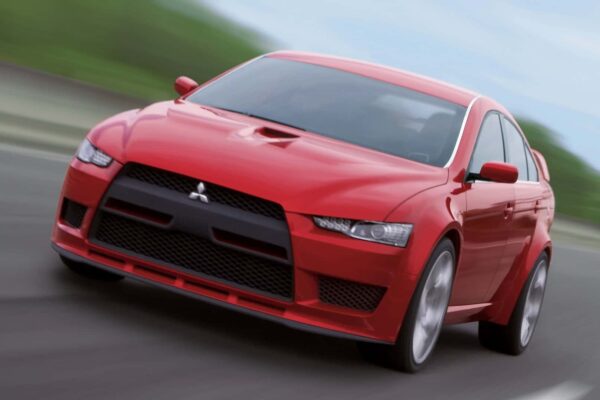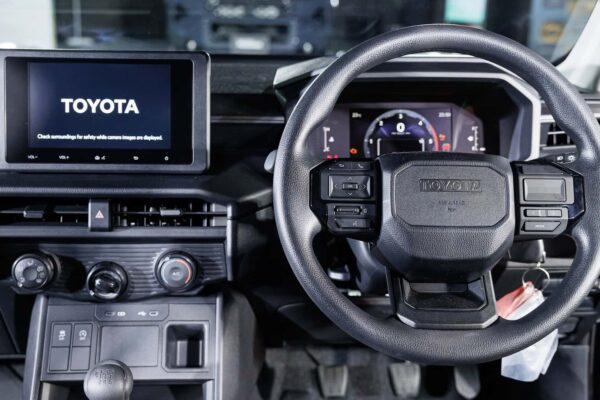Whether it’s substandard charging infrastructure, the federal government replacing incentives with tariffs, tightening budgets, or all of the above, it’s clear that demand for EVs is slowing — and automakers are reacting in real time.
Many electric cars that were available in 2025 will be cut for 2026. Some of the “temporary production pauses” are in direct response to the tariffs, while others are dropped entirely simply because they weren’t selling, tariffs or not.
There’s also a growing list of electric cars expected for 2026, some of which have been heavily promoted, but have recently been postponed or cancelled. This includes an all-electric pickup, a family SUV, and a high-performance car with an estimated 900 horsepower.
Whatever the case, here are 10 existing or planned electric cars that won’t make it until 2026.
Acura ZX
Photo by: Acura
Probably few thought of the new Acura ZX The electric crossover — Acura’s first electric vehicle — will have a shorter lifespan than the original ZDX in the 2000s, but here we are. After just one year on the market, Honda’s luxury arm is pulling the plug on its GM-developed SUV.
The base model was good for up to 313 miles of range, and there was also a Type S version with 499 horsepower. But the Chevrolet Blazer’s roots weren’t well hidden, and the overall driving experience was average at best. Therefore, Acura is cutting its losses. Fun fact, though: Despite being on sale for much less time, the modern ZDX should still easily outperform its funky predecessor. Acura moved 7,391 electric ZDXs in 2024 and has already sold nearly 12,000 cars in 2025 so far, while sales of the previous generation totaled just 7,191.
Dodge Charger SRT Daytona Banshee
Photo by: Dodge
Focusing on the electric car that was supposed to be released next year but won’t be, we have it Dodge Charger SRT Daytona Banshee. It was supposed to be a triple-motor Halo version of the new Dodge Charger EV, but an “inside source” says that’s no longer happening.
The Banshee was supposed to produce 900 horsepower, and while Dodge has not officially commented as of this writing, the Banshee’s alleged demise is frankly believable if not understandable. Reviews, sales, and residual values haven’t been kind to the regular Daytona; It’s as if a big V-8 was the primary goal of a car like this all along.
Genesis electrified G80
Photo by: Genesis
The Genesis Electrified G80, like most things this company makes, is a great car. But it was also doomed from the start. A low-market electric version of a midsize luxury sedan from a brand that’s not German or Lexus? This is a niche within a niche within a niche. Add to that the fact that it was only sold in select states initially, and its discontinuation from the US market earlier this year seems like a self-fulfilling prophecy.
In practical terms, the electrified G80 looks like a Tesla Model S if it were made by a company that actually cared. But its headline numbers — 282 miles of range, 385 horsepower — weren’t exciting and the e-G80 didn’t make a mark, culturally or in terms of sales.
Maserati MC20 Folgore
Photo by: Maserati
In the same vein, Maserati has decided to stop producing a planned electric version of its MC20 supercar called the Folgore. Yes guys, I too just learned that Maserati was working on an electric MC20, because more power, weight and less noise is exactly what that car needs, you see.
Anyway, the company introduced the facelifted MC20 earlier this year with a new name: MCPura. I can’t prove it, and Maser will probably never admit it, but $20 says that “MCPura” is what the electric car was supposed to be called.
Mercedes-Benz EQB
Photo by: Mercedes-Benz
Here’s a dirty secret from someone who writes about cars professionally: I was a year old when I learned that Mercedes-Benz EQB It was a real car that Mercedes had been selling to real people for the past four years. Look, you’ve heard of the GLB, and the Class B was a favorite in Canada among landlords looking for something stylish to rent, but the EQB? What is this? Where was the start?
Anyway, it’s perhaps not surprising that 2025 will be the last year its model is available in North America. Starting at $54,200, the EQB seemed to pack up to 251 miles of range and featured very little of the Geely aesthetics that made other MB EVs so polarizing. Those looking for an entry-level electric Benz won’t be left hanging, because the shiny, gas-free CLA is all-new for the 2026 model year.
Mercedes-Benz EQE / EQS Sedan / SUV
Photo by: Mercedes-Benz
The EQE and EQS are two electric Mercedes cars you’ve definitely heard about, but that hasn’t stopped them from stopping here in the States. As of September 1, Mercedes has temporarily halted production not only on all EQE and EQS sedans bound for America, but also on its SUV models. Cars are still being sold overseas, but as far as the US is concerned, order books are closed for the time being.
Of the four major German luxury brands, Mercedes has arguably faced the toughest challenges in the electric vehicle space. The EQ family has been hounded for its weird pill-shaped designs, weird Hyperscreen technology, and questionable branding — every time I see the suffix “with EQ technology,” I expect it to be followed by “based on the novel Push by Sapphire.”
Nissan Ariya
Photo by: Nissan
After three short years of being one of the most interesting cars in Nissan’s lineup, it has Aria It will exit the US market after 2025. Officially, this car will be “paused” for 2026, the company previously told Engine1 “No decision has been made regarding MY27 Ariya.”
On its own merit, the 289-mile Ariya didn’t have many glaring flaws, but fierce competition, mediocre sales exacerbated by tariffs (this car was built in Tochigi, Japan) and sluggish demand across the EV nameplate meant an early end. Or at least an extended break. For now, Nissan is focusing on the 2026 Leaf, a small electric car that offers more than 300 miles of range for less than $32,000, and is here to redefine basic transportation.
Polestar 2
Photo by: Polestar
The Polestar 2, which costs $50,000 to start, has been a solid alternative to the Tesla Model 3 since it dropped in 2020. But it’s made in China and subject to tariffs, so it’s taking an indefinite break from the US market. On Polestar’s US customer-facing website, the number 2 still appears, but the only “store” option is for used models.
This car gets an update for 2024, replacing the front-drive single-motor version with a rear-drive version, improving charging times, and adding a 50-mile range (320 total) with a larger battery. The remaining Polestar 3 SUV is one of the best electric cars I’ve driven in recent memory, but it’s also a bit more expensive, starting at around $75,000.
Porsche’s flagship SUV
Porsche Cayenne electric model
Photo by: Porsche
The new Cayenne Electric is still scheduled to launch in 2026, but was originally supposed to come with a larger electric SUV from Porsche. As part of the company’s major push into electrification in September, the flagship vehicle codenamed ‘K1’ will not only be delayed, but will be preceded by petrol-only and plug-in hybrid variants instead.
Regardless of the drivetrain, Porsche’s future SUV is expected to seat seven and use a new 900-volt architecture for ultra-fast charging times. Porsche has been making heavy family cars that defy physics and somehow feel like proper driving machines for a while, but the K1 has to be the carmaker’s most demanding engineering magic trick yet. And apparently the most demanding: getting it to market on time.
Ram electric pickup
Photography: Ram
While parent company Stellantis remains officially mum on the future of the Dodge Banshee, it has confirmed in writing that it is no longer working on the Ram electric pickup truck promised years ago. The gas-free Ram was first announced in 2021 with a release expected in 2024, and has been delayed several times over the years. Late 2024 became 2026, which eventually became 2027. It has now been shelved.
However, the name will live on: The Ram plug-in hybrid formerly known as the Ramcharger has been renamed the Ram 1500 REV, which is what the all-electric truck was supposed to be called. Considering that Stellantis also owns Maserati, my “MCPura” theory seems more and more plausible the more I think about it.


